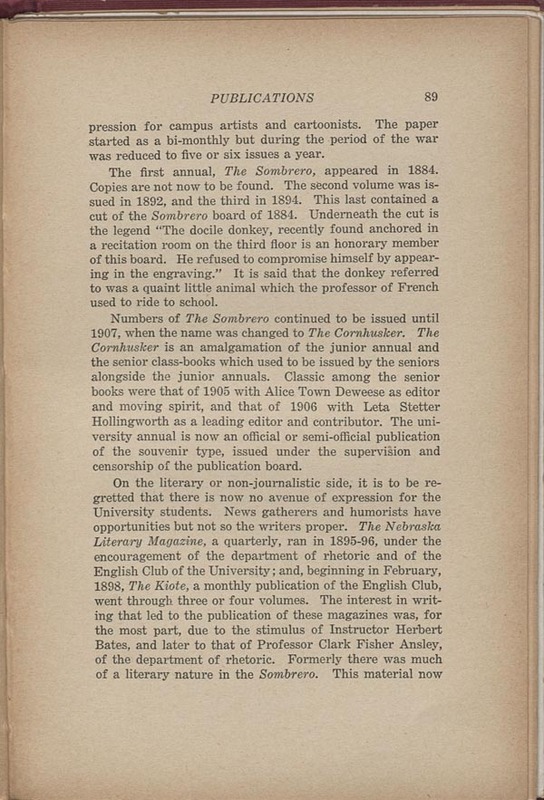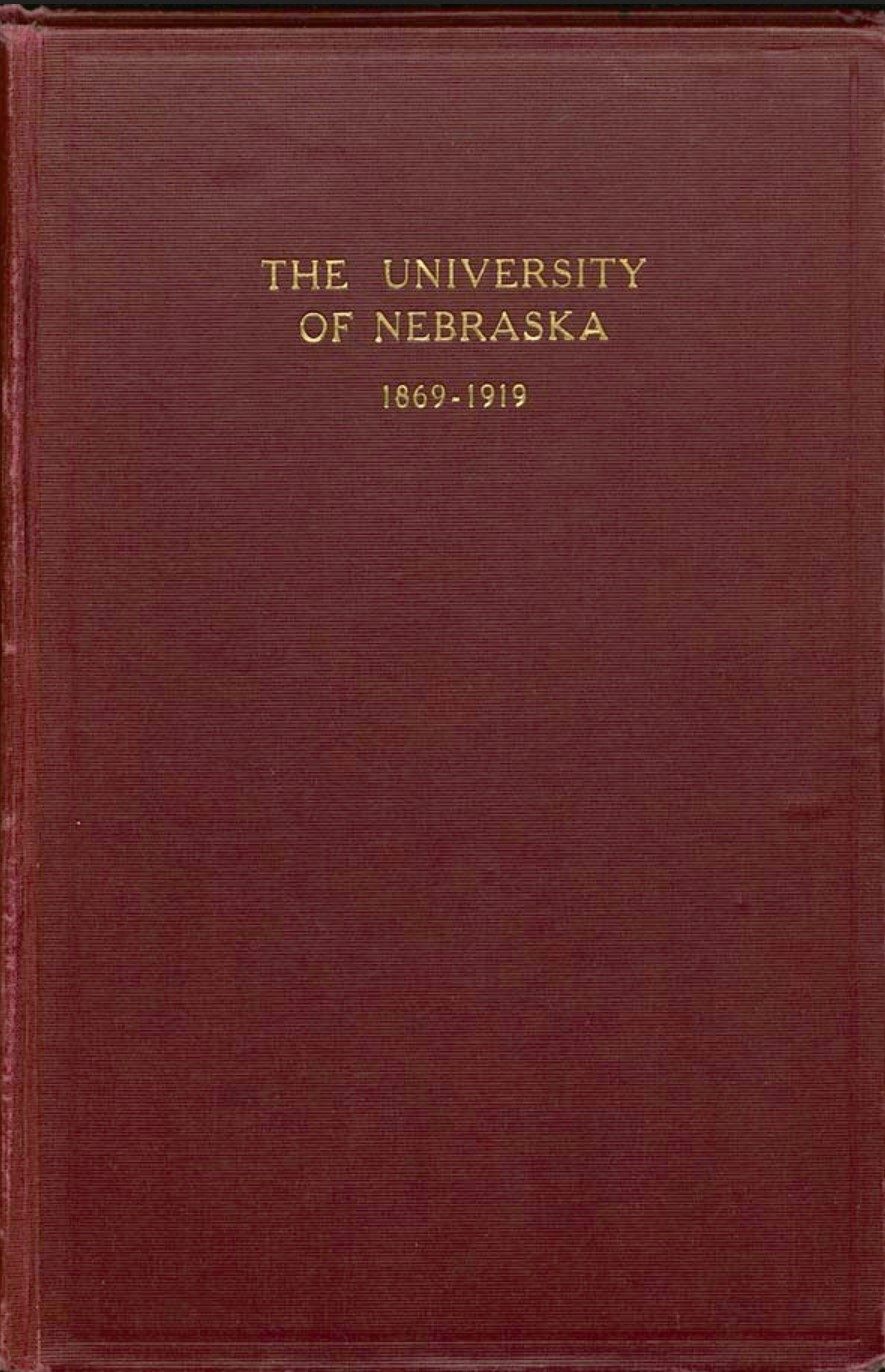093
Item
-
Title
-
093
-
Description
-
Semi-Centennial Anniversary Book: The University of Nebraska, 1869-1919
-
Transcription
-
pression for campus artists and cartoonists. The paper started as a bi-monthly but during the period of the war was reduced to five or six issues a year.
The first annual, The Sombrero, appeared in 1884. Copies are not now to be found. The second volume was issued in 1892, and the third in 1894. This last contained a cut of the Sombrero board of 1884. Underneath the cut is the legend "The docile donkey, recently found anchored in a recitation room on the third floor is an honorary member of this board. He refused to compromise himself by appearing in the engraving." It is said that the donkey referred to was a quaint little animal which the professor of French used to ride to school.
Numbers of The Sombrero continued to be issued until 1907, when the name was changed to The Cornhusker. The Cornhusker is an amalgamation of the junior annual and the senior class-books which used to be issued by the seniors alongside the junior annuals. Classic among the senior books were that of 1905 with Alice Town Deweese as editor and moving spirit, and that of 1906 with Leta Stetter Hollingworth as a leading editor and contributor. The university annual is now an official or semi-official publication of the souvenir type, issued under the supervision and censorship of the publication board.
On the literary or non-journalistic side, it is to be regretted that there is now no avenue of expression for the University students. News gatherers and humorists have opportunities but not so the writers proper. The Nebraska Literary Magazine, a quarterly, ran in 1895-96, under the encouragement of the department of rhetoric and of the English Club of the University; and, beginning in February, 1898, The Kiote, a monthly publication of the English Club, went through three or four volumes. The interest in writing that led to the publication of these magazines was, for the most part, due to the stimulus of Instructor Herbert Bates, and later to that of Professor Clark Fisher Ansley, of the department of rhetoric. Formerly there was much of a literary nature in the Sombrero. This material now
-
Rights
-
To inquire about usage, please contact Archives & Special Collections, University of Nebraska-Lincoln Libraries. These images are for educational use only. Not all images are available for publication.



